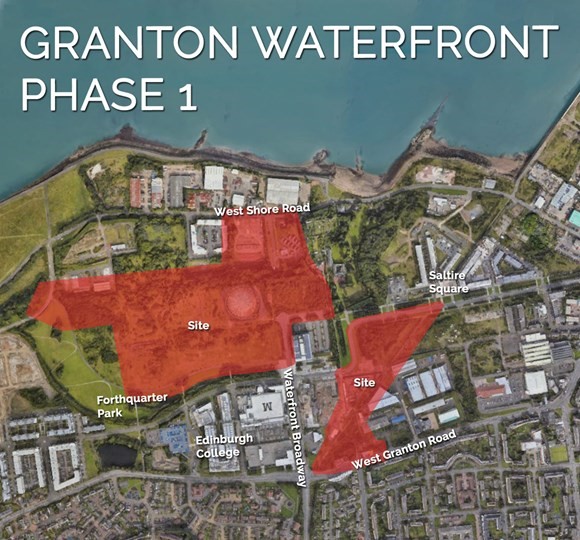Active Travel Commissioner, Dame Sarah Storey has set out Greater Manchester’s intention to eliminating deaths and serious injuries on the city-region’s roads through ‘Vision Zero’. In 2021, 858 people were killed or seriously injured in collisions on Greater Manchester’s roads. Vision Zero is the next step in Greater Manchester’s mission to reduce the number of deaths or serious injuries caused on the city-region’s roads, and in turn make it a safer, healthier and more sustainable place for pedestrians, cyclists, motorcyclists and motorists. By taking decisive action, around 3,800 unnecessary deaths and serious injuries could be prevented by 2040. On Monday (5th June) Dame Sarah was joined by Greater Manchester’s Transport Commissioner Vernon Everitt and other key stakeholders at the Big Active Conversation in Tameside to announce the start of a detailed programme to fully develop Greater Manchester’s Vision Zero approach, with the aim of presenting a unified strategy with a shared ambition of zero deaths and serious injuries on Greater Manchester’s roads. Road danger reduction experts, Agilysis, has been commissioned to develop the strategy in the coming months, with a first draft expected in Autumn. As part of this work Agilysis will identify and engage with key stakeholders, including Greater Manchester Police and other emergency services, with a view to consulting with members of the public next year. The strategy will then be adopted subject to agreement with the Greater Manchester Combined Authority. Active Travel Commissioner Dame Sarah Storey said on Monday: “Any death or serious injury on our roads is one too many, and these collisions are already devastating people’s lives. “It’s heart-breaking to learn of a fatal or life-changing collision and sadly there has been some horrendous incidents very recently right on our doorstep. These incidents are neither acceptable or inevitable, and we should all be doing everything we can to prevent them. “Back in November I launched a refreshed mission for Greater Manchester’s active travel programme and within that I recommended the region adopt Vision Zero. “Today’s announcement is the first step on making that a reality and I hope the work that now follows will pave the way in making everyone feel safe when they take to the roads, whether that be in a car, on foot or on a bike. “Getting it right will require a collective effort and commitment by everyone, which is why I am delighted to have Agilysis on board as we start our journey today.” As well as stamping out serious injuries and deaths on Greater Manchester’s roads, Vision Zero will help tackle the impact on the emergency services and the cost to public finances, with the potential to save the city-region’s economy more than £4.5billion over the next 20 years. The strategy will draw on best practice from other cities around the world and across the UK with Vision Zero strategies in place, including Stockholm, Oslo, London and Bristol. Some of the effective measures to have been introduced include 20mph speed limits, safer junctions and segregated lanes for people to walk, wheel and cycle and increased enforcement for speeding vehicles. Greater Manchester’s Vision Zero plan will also build on the existing work of the city-region’s Road Danger Reduction Advisory Group and Greater Manchester Police, which has already been bolstering operations to keep people safe when they are using the region’s transport and highways network. Transport Commissioner Vernon Everitt said: “Commitment to Vision Zero in cities and regions across the UK and overseas has resulted in a significant reduction in death and serious injury on the roads. “We look forward to the outcome of the work by our road danger reduction experts to see the potential for similarly positive outcomes in Greater Manchester, building on the work already undertaken by districts, TfGM, the police and other partners.” Greater Manchester is already taking steps to reduce the number of people killed or seriously injured on our roads, with improved walking, wheeling and cycling infrastructure as it builds the largest active travel network in the country as part of the Bee Network. In addition, GM boroughs have been trialling new schemes to boost active travel participation in a safer environment, such as the School Streets pilots and the introduction of 20mph zones. In Greater Manchester there were 28 pedestrians killed and 217 serious injuries as a result of road collisions in 2021. Meanwhile, there were five cyclist fatalities and 129 serious cyclist casualties in the same period, plus 10 motorcyclist deaths and 106 serious casualties. In addition there were 29 fatalities amongst car occupants (which includes drivers and passengers of private vehicles, taxis and minibuses) along with 305 casualties suffering serious injuries. Drivers failing to look properly remains one of the top contributory factors recorded for collisions between a person cycling and drivers, as well motorcyclists. In the top five driver manoeuvres which cause injury to Greater Manchester cyclists, three are associated with turning, and not looking and seeing properly including; turning right; driving ahead right-hand bend and turning left. Superintendent Gareth Parkin of GMP’s Transport Unit added: “We are committed to Vision Zero for Greater Manchester. Every life lost on our roads is a tragedy that deeply effects our community. “With our growing Roads Policing team, we will continue to increase our capability to enforce, educate the public, and work with stakeholders to eliminate preventable collisions.” Building, Design & Construction Magazine | The Choice of Industry Professionals














